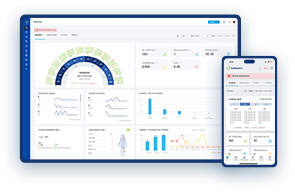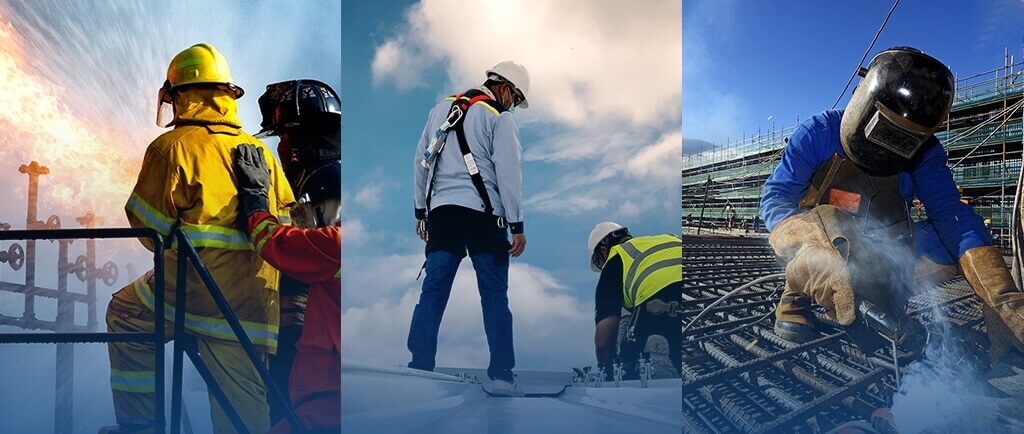
Top 10 Riskiest Jobs
Every day, millions of people across the world go to work to earn a living, but for some workers, the job comes with a higher risk of injury or even death. In this blog post, we’ll take a closer look at the top 10 riskiest jobs, the potential hazards involved, and what can be done to improve worker safety.
We’ll examine the physical and mental toll of these jobs, the legal protections available, and the emerging risks and potential solutions to make these jobs safer. Let’s dive into the world of high-risk jobs and explore how we can protect the workers who perform them.
List of top 10 riskiest jobs in the world:
- Construction worker
- Firefighter
- Logger
- Miner
- Roofer
- Fisherman
- Police Officer
- Pilot
- Refuse Collector
- Welder
Now, let’s get in to more detail on each job, the fatality rate, common hazards involved in each, safety measures that can be taken, impact on worker health, legal protection available, emerging risks and the potential solutions.
Construction worker
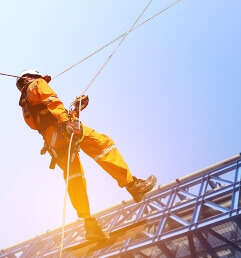
Construction workers perform a variety of tasks such as laying foundations, building walls, and installing roofing. They work outdoors in all types of weather and are exposed to many hazards such as falls from heights, electrocution, and being struck by objects.
According to the US Bureau of Labor Statistics (BLS), in 2020 there were 1,061 fatal occupational injuries in the construction industry, with falls accounting for the largest number of fatalities. Additionally, there were over 200,000 nonfatal injuries and illnesses that required days away from work.
Falls, electrocution, struck-by objects, and caught-in/between hazards are among the most common hazards faced by construction workers. These hazards can result in serious injuries or fatalities. For example, falls are the leading cause of death for construction workers, accounting for over a third of all fatalities in the industry.
Employers typically implement safety measures such as providing personal protective equipment (PPE), conducting safety training, and implementing safety protocols for working at heights and operating heavy machinery.
Construction workers are at risk of developing musculoskeletal disorders from the physical demands of their job, as well as respiratory problems from exposure to dust and other airborne hazards. The noise level at construction sites can also lead to hearing loss. Additionally, the job can be stressful due to tight deadlines, demanding clients, and dangerous working conditions.
Related read: Our listing of the best Health and Safety Software.
Firefighter
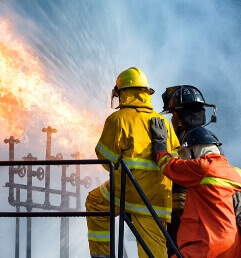
Firefighters are responsible for responding to fires, performing rescues, and providing emergency medical care. They face numerous hazards such as exposure to flames, smoke inhalation, and building collapses.
The BLS reports that in 2020, there were 43 fatal occupational injuries among firefighters. Firefighters also have high rates of nonfatal injuries, with the National Fire Protection Association reporting that in 2019, over 62,000 firefighter injuries occurred in the US.
Firefighters face a range of hazards, including burns, smoke inhalation, physical strain, and falls. These hazards can result in serious injuries or fatalities. For example, firefighters are at risk of suffering from cancer due to exposure to smoke and other hazardous substances during their work.
Employers typically implement safety measures such as providing PPE, conducting regular training on fire safety, and implementing protocols for responding to emergencies.
Firefighters are at risk of developing respiratory problems, cancer, and cardiovascular disease due to exposure to smoke and other hazardous materials. They are also at risk of physical injuries such as burns and fractures, as well as mental health issues such as post-traumatic stress disorder (PTSD) from exposure to traumatic events.
Logger
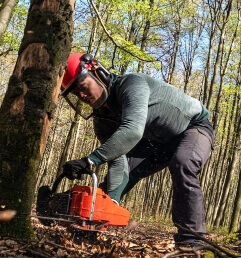
Loggers cut down trees and process them for use in building materials and paper products. They work in remote areas and are exposed to hazards such as falling trees, equipment accidents, and exposure to dangerous chemicals.
The BLS reports that in 2020, there were 51 fatal occupational injuries in the logging industry. Loggers also have high rates of nonfatal injuries, with a study by the National Institute for Occupational Safety and Health (NIOSH) finding that loggers had a nonfatal injury rate of 215 per 10,000 full-time workers.
Loggers face hazards such as falls, being struck by falling objects, and being caught in or between equipment. These hazards can result in serious injuries or fatalities. For example, loggers are at risk of suffering from musculoskeletal disorders due to the physical demands of their work.
Employers typically implement safety measures such as providing PPE, conducting safety training on the use of equipment and working at heights, and implementing protocols for avoiding dangerous situations.
Loggers are at risk of developing musculoskeletal disorders from the physical demands of their job, as well as respiratory problems from exposure to dust and other airborne hazards. They are also at risk of physical injuries such as falls, cuts, and amputations.
Miner
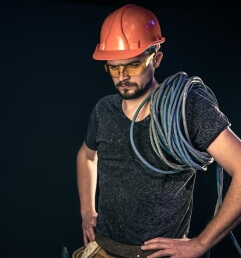
Miners extract minerals and ores from underground mines. They work in confined spaces and are exposed to hazards such as cave-ins, explosions, and exposure to harmful chemicals.
The BLS reports that in 2020, there were 28 fatal occupational injuries in the mining industry. Miners also have high rates of nonfatal injuries, with the Mine Safety and Health Administration reporting that in 2019, there were over 4,500 nonfatal injuries in the mining industry.
Miners face hazards such as explosions, cave-ins, and exposure to hazardous materials such as coal dust and silica. These hazards can result in serious injuries or fatalities. For example, miners are at risk of suffering from black lung disease due to exposure to coal dust.
Employers typically implement safety measures such as providing PPE, conducting safety training on working with explosives and hazardous materials, and implementing protocols for cave-ins and other emergency situations.
Miners are at risk of developing respiratory problems such as black lung disease from exposure to dust and other airborne hazards. They are also at risk of physical injuries such as falls, cave-ins, and explosions.
Roofer
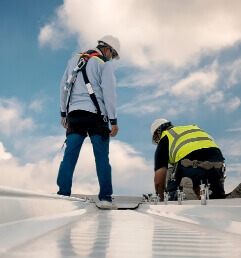
Roofers install and repair roofs on homes and commercial buildings. They work at heights and are exposed to hazards such as falls, burns from hot tar, and exposure to harmful chemicals.
The BLS reports that in 2020, there were 53 fatal occupational injuries in the roofing industry. Roofers also have high rates of nonfatal injuries, with a study by NIOSH finding that roofers had a nonfatal injury rate of 290 per 10,000 full-time workers.
Roofers face hazards such as falls, electrocution, and being struck by falling objects. These hazards can result in serious injuries or fatalities. For example, roofers are at risk of suffering from heat stress due to working in hot conditions.
Employers typically implement safety measures such as providing PPE, conducting safety training on working at heights and using tools, and implementing protocols for avoiding falls and other dangerous situations.
Roofers are at risk of developing musculoskeletal disorders from the physical demands of their job, as well as respiratory problems from exposure to dust and other airborne hazards. They are also at risk of physical injuries such as falls, cuts, and burns.
Fisherman

Fishermen catch fish and other seafood for commercial sale. They work in rough seas and are exposed to hazards such as drowning, hypothermia, and injury from handling equipment.
According to the BLS, in 2020 there were 40 fatal occupational injuries among fishers and related fishing workers. Additionally, a study by NIOSH found that commercial fishing had the highest occupational fatality rate of any industry in the US.
Fishermen face hazards such as drowning, hypothermia, and being struck by equipment. These hazards can result in serious injuries or fatalities. For example, fishermen are at risk of suffering from musculoskeletal disorders due to the physical demands of their work.
Employers typically implement safety measures such as providing PPE, conducting safety training on working with equipment and in rough weather conditions, and implementing protocols for avoiding dangerous situations.
Police Officer
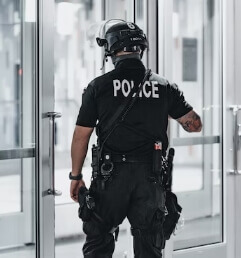
Police officers enforce the law and respond to emergencies. They face numerous hazards such as being shot or stabbed, car accidents, and exposure to infectious diseases.
The BLS reports that in 2020, there were 355 fatal occupational injuries among police officers and other law enforcement personnel. Additionally, a study by the National Law Enforcement Officers Memorial Fund found that in 2020, there were over 57,000 assaults against law enforcement officers in the US.
Police officers face hazards such as physical assault, vehicular accidents, and exposure to hazardous substances. These hazards can result in serious injuries or fatalities. For example, police officers are at risk of suffering from post-traumatic stress disorder (PTSD) due to exposure to traumatic events during their work.
Employers typically implement safety measures such as providing PPE, conducting safety training on responding to dangerous situations, and implementing protocols for protecting officers in the line of duty.
Pilot

Pilots operate aircraft for commercial or military purposes. They work at high altitudes and are exposed to hazards such as turbulence, equipment failures, and extreme weather conditions.
The BLS reports that in 2020, there were 76 fatal occupational injuries among aircraft pilots and flight engineers. Pilots also have high rates of nonfatal injuries, with a study by NIOSH finding that pilots had a nonfatal injury rate of 122 per 10,000 full-time workers.
Pilots face hazards such as equipment failure, turbulence, and exposure to radiation. These hazards can result in serious injuries or fatalities. For example, pilots are at risk of suffering from hearing loss due to exposure to loud noise in the cockpit.
Employers typically implement safety measures such as providing PPE, conducting safety training on emergency procedures and dealing with equipment failures, and implementing protocols for avoiding dangerous situations in the air.
Refuse Collector
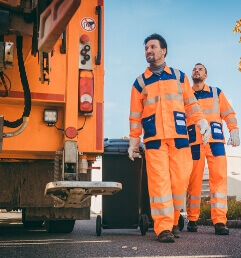
Refuse collectors collect and dispose of waste and recyclable materials. They are exposed to hazards such as traffic accidents, back injuries from lifting heavy objects, and exposure to harmful chemicals.
According to the BLS, in 2020 there were 37 fatal occupational injuries among refuse and recyclable material collectors. Refuse collectors also have high rates of nonfatal injuries, with a study by NIOSH finding that refuse and recyclable material collectors had a nonfatal injury rate of 471 per 10,000 full-time workers.
Refuse collectors face hazards such as being struck by vehicles or objects, exposure to hazardous materials, and physical strain. These hazards can result in serious injuries or fatalities. For example, refuse collectors are at risk of suffering from back injuries due to the physical demands of their work.
Employers typically implement safety measures such as providing PPE, conducting safety training on operating equipment and lifting heavy objects, and implementing protocols for avoiding dangerous situations on the job.
Welder

Welders join metal parts together using high heat and electrical currents. They are exposed to hazards such as burns, eye injuries from bright light, and exposure to dangerous chemicals.
The BLS reports that in 2020, there were 10 fatal occupational injuries among welders, cutters, solderers, and brazers. Welders also have high rates of nonfatal injuries, with a study by NIOSH finding that welders had a nonfatal injury rate of 240 per 10,000 full-time workers.
Welders face hazards such as exposure to hazardous materials, burns, and electrical shock. These hazards can result in serious injuries or fatalities. For example, welders are at risk of suffering from lung cancer due to exposure to fumes and gases produced during welding.
Employers typically implement safety measures such as providing PPE, conducting safety training on working with hazardous materials and equipment, and implementing protocols for avoiding fires and other dangerous situations.
Legal protections for high risk workers
Workers’ compensation – In most states, construction workers, firefighters, loggers, miners, roofers, and other workers in high-risk industries are eligible for workers’ compensation benefits if they are injured on the job. Workers’ compensation benefits typically cover medical expenses, lost wages, and other costs associated with work-related injuries or illnesses.
Occupational Safety and Health Administration (OSHA) – OSHA sets and enforces safety standards in the workplace, and investigates accidents and complaints. Workers can file a complaint with OSHA if they believe their employer is not providing a safe work environment.
Fair Labor Standards Act (FLSA) – The FLSA sets standards for minimum wage, overtime pay, and other employment practices. Workers in high-risk industries are entitled to the same protections under the FLSA as workers in other industries.
National Institute for Occupational Safety and Health (NIOSH) – NIOSH conducts research on workplace safety and health, and provides guidance to employers and workers on how to reduce the risk of workplace injuries and illnesses.
It’s important to note that legal protections can vary by state and by industry, so it’s important for workers to be familiar with the specific laws and regulations that apply to their job.
Emerging risks
Automation – As automation and robotics become more prevalent in industries such as manufacturing and construction, workers may be at risk of injury from working alongside machines or from being replaced by automation.
Artificial Intelligence – Some industries, such as healthcare, are exploring the use of artificial intelligence to improve patient outcomes. However, these technologies may introduce new risks for workers, such as the potential for errors in automated systems or the risk of job displacement.
Climate change – Climate change is creating new hazards for workers in industries such as agriculture, fishing, and construction. Workers may be exposed to extreme weather conditions, higher temperatures, and other environmental risks that can impact their health and safety.
Cybersecurity – As more industries become reliant on technology and digital systems, cybersecurity risks may pose a threat to workers in jobs such as finance, healthcare, and transportation. These risks can include data breaches, cyber attacks, and other threats to digital infrastructure.
It’s important for employers and workers to stay aware of these emerging risks and take steps to mitigate them, such as investing in training and safety equipment, implementing cybersecurity protocols, and developing emergency plans for extreme weather events or other environmental hazards.
Potential solutions to avoid risks
While high-risk jobs will always come with some level of danger, there are steps that employers can take to make these jobs safer for their workers. Here are some potential solutions:
Implement safety training programs – Employers can provide regular safety training programs for workers to help them identify potential hazards and learn how to minimize risks. This can include training on the use of personal protective equipment, safe work practices, and emergency response procedures.
Develop safety protocols – Employers can develop and implement safety protocols, such as checklists and hazard assessments, to identify and mitigate potential risks in the workplace.
Use new technologies – Emerging technologies, such as wearable sensors and monitoring systems, can help employers identify potential hazards in real-time and take action to prevent accidents before they occur.
Offer medical benefits and support – Employers can offer medical benefits and support to workers who are injured on the job, such as workers’ compensation, medical coverage, and rehabilitation services.
Involve workers in safety planning – Employers can involve workers in the planning and implementation of safety programs, to ensure that workers have a voice in identifying potential hazards and developing solutions.
It’s important for employers to take a proactive approach to safety in high-risk jobs, to ensure that workers are protected from harm and can perform their jobs with confidence and security.

Ramesh Nair is the Founder and Principal Partner of Niyati Technologies, the company behind Safetymint.
He’s a dedicated advocate for workplace safety. Ramesh firmly believes that every individual deserves to return home safely after a day’s work. Safetymint, the innovative safety management software, emerged from this conviction. It’s a platform designed to streamline safety management, empower safety professionals, and enhance safety in workplaces.
Through his blog, Ramesh shares insights, best practices, and innovative solutions for workplace safety. Visit his social media profiles to follow him for regular updates.
